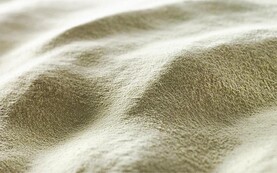All dairy processors have now declared their milk price for November.
Dale Farm is the only buyer to reduce price for November milk, shaving 0.5p/l off its base to leave the co-op on 29.7p/l.
Adding in the 0.3p/l loyalty bonus, and 2p/l winter bonus, means that most suppliers of NI’s largest processor are on an all-in base price of 32p/l.
Earlier this week, Aurivo announced it is holding its base price at 29p/l, plus its 2p/l winter bonus.
The west of Ireland-based processor also confirmed to the Irish Farmers Journal that 24 of its NI suppliers have taken up the latest fixed price milk scheme. It guarantees a base price of 29p/l on up to 10% of milk produced for a three-year period, starting on 1 January 2018.
The 24 suppliers equate to around one third of Aurivo’s NI producer base, with all suppliers taking up the maximum 10% allocation.
The only other processor to declare this week was LacPatrick, which held its base at 29.25p/l. Its winter bonus payment drops from 3p/l to 2p/l for November, bringing the co-op to an all-in base price of 31.25p/l. Suppliers who meet Red Tractor assurance receive an additional 0.2p/l.
It is understood that just over 90% of the co-op’s NI milk pool is now Red Tractor-assured.
However, that still leaves a sizeable number of smaller producers not Red Tractor quality assured. From 1 January 2018, LacPatrick suppliers who are not supplying Red Tractor milk (there is a grace period for those who have applied, and are waiting an inspection) will face a 0.5p/l penalty.
Market confidence
While last week’s Winter Fair was an opportunity to catch up with suppliers, it was also being used to convey warnings of lower prices in the new year. That message seems to have got through, with the monthly sale of dairy cattle by Taaffe Auctions in Dungannon Mart on Tuesday of this week a much more subdued affair, with buyers in a cautious mood.
All lots were sold, with a sale average of 1,822gns, down by £50/head on the previous sale. Prices peaked at 3,000gns for a freshly calved heifer from the McLean Family at Donaghmore.
GDT
Meanwhile, the final GDT auction of 2017 fell by 3.9% to an index of US $2,969 which converts to 29.5p/l before factoring in processing costs.
Butter fell 2.3% with cheddar dropping 7.9%.
Whole milk powder fell by 2.5% with skim milk powder down 4.8%.
Buyer sentiment taking dairy market down
The main factor taking dairy commodity prices down into the new year is buyer sentiment, driven by the expectation that more milk is coming to the market.
Speaking at a breakfast event organised by the NI Institute of Agricultural Science (NIIAS) on the morning of the Winter Fair last week, the NI director of Dairy UK Dr Mike Johnston explained that buyers know that supply is not a problem in the short to medium term. As a result, they are buying short, as they think prices will be lower the next time round.
“The outlook for 2018 I would suggest, is not encouraging. Farmers need to prepare for falling milk prices.
‘‘But if supply doesn’t go way ahead of demand, I would hope that we wouldn’t see the prices of 18 months ago,” he said.
On a positive note, what might help the market stabilise is the fact that the Chinese are active in the powder market. There is also the prospect of slightly higher oil prices in 2018, which might help demand from oil-exporting countries, said Johnston. However, assuming we are entering another cycle of lower milk prices, this cycle is different to the last one, as EU milk quotas are no longer in place to keep a lid on production.
Reaction
In NI (where quota was not an issue), the initial reaction from dairy farmers to lower prices was to produce more, not less.
There was also intervention buying of skim in Europe to help stabilise the market. “I doubt if it will happen this time around,” said Johnston.






 This is a subscriber-only article
This is a subscriber-only article










SHARING OPTIONS: